Nestled in the southwestern United States, Mesa Verde’s cliff dwellings whisper tales of an ancient civilization that mysteriously vanished around 1300 CE.
The enigma of Mesa Verde’s abandonment intrigues historians and archaeologists alike, prompting a quest to unravel the intricate factors behind this exodus.
Around this pivotal era, the Ancestral Puebloans left behind the remarkable architectural legacy of their cliff dwellings.
Was it environmental adversity, cultural beliefs, or societal unrest that drove this once-flourishing community to abandon their intricate homes?
Delving into the shadows of the past, the story of Mesa Verde’s abandonment unfolds, weaving together threads of history, culture, and the profound mysteries of a bygone civilization.

When Was Mesa Verde Abandoned and Why?
Mesa Verde, a captivating archaeological site located in the southwestern United States, is renowned for its ancient cliff dwellings built by the Ancestral Puebloans.
The site tells a compelling story of a thriving community that mysteriously abandoned its intricate dwellings around 1300 CE.
The reasons behind this enigmatic departure are multifaceted, encompassing social, environmental, and cultural factors that contributed to the unraveling of this once-vibrant civilization.
Environmental Changes: The Drought Dilemma (1300 CE)
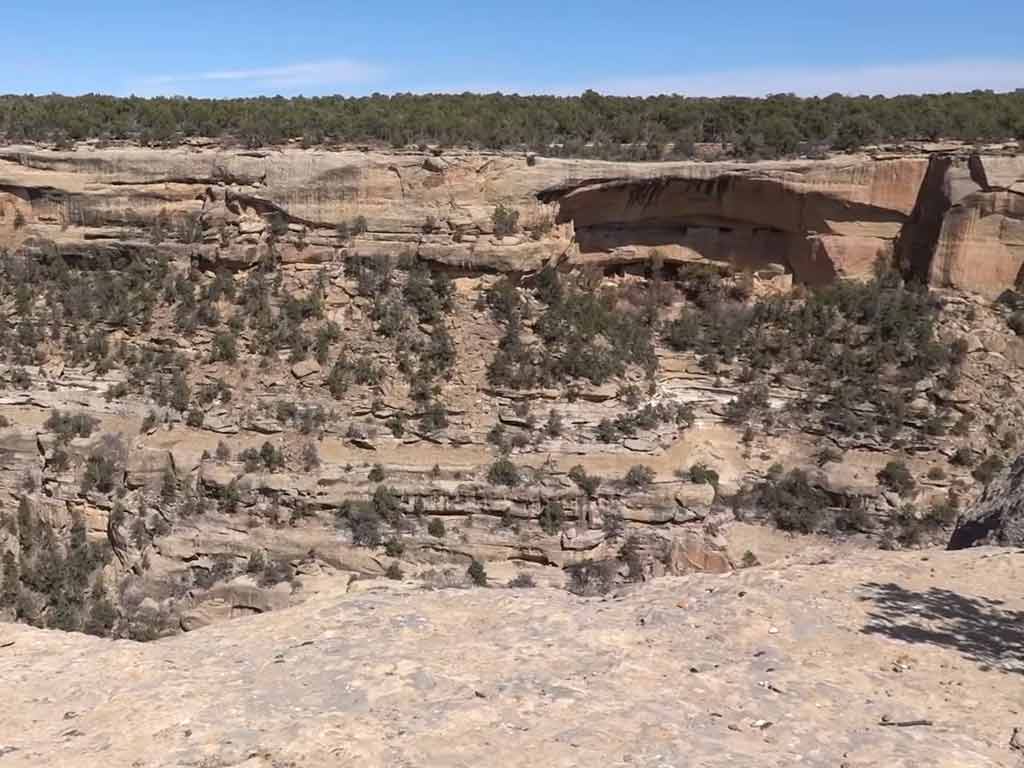
In the waning years of the 13th century, Mesa Verde faced a climatic crisis marked by severe and prolonged droughts.
The arid conditions drastically reduced the availability of water and crops, posing an existential threat to the thriving community.
Faced with the harsh reality of diminishing resources, the Ancestral Puebloans may have undertaken a pragmatic journey in search of more hospitable lands, where water and sustenance were more reliable.
Social and Political Turmoil
As Mesa Verde prospered, so did its population. The resultant strain on resources likely gave rise to social and political tensions, culminating in heightened competition and, unfortunately, violence.
The cliff dwellings, with their intricate design, might have served as defensive structures against external threats, reflecting a society grappling with internal strife.
Faced with the specter of conflict, the Ancestral Puebloans may have chosen to abandon Mesa Verde in pursuit of communities offering respite from the turmoil that had befallen their once-thriving home.
Cultural and Religious Transformations
Beneath the tangible factors lies a deeper narrative of cultural and religious transformation.
Some scholars posit that a spiritual reawakening among the Ancestral Puebloans played a significant role in their departure from Mesa Verde.
Religious leaders, envisioning a new homeland and a renewed way of life, may have inspired the community to embark on a pilgrimage.
This profound shift in belief systems could have severed the connection to ancestral lands, compelling the Ancestral Puebloans to seek spiritual and cultural renewal in distant territories.
Rediscovery and Preservation: Mesa Verde’s 19th-Century Renaissance
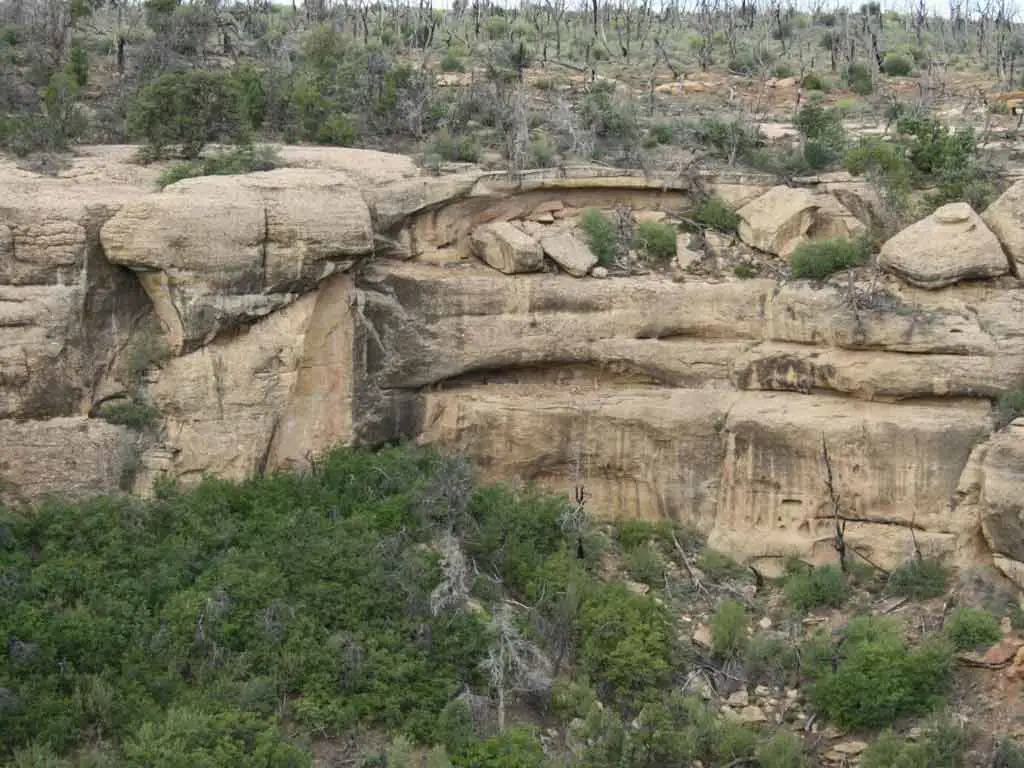
Following the Ancestral Puebloans’ departure, Mesa Verde languished in relative obscurity for centuries.
However, the late 19th century saw a resurgence of interest, with explorers, ranchers, and tourists rediscovering the site’s allure.
Unfortunately, this newfound fascination led to a dark chapter of looting and vandalism.
Recognizing the need for preservation, Mesa Verde was declared a national park in 1906, marking a crucial turning point.
Today, protected by the federal government and designated as a UNESCO World Heritage Site, Mesa Verde stands as a testament to the enduring legacy of the Ancestral Puebloans, drawing visitors, researchers, and descendants who continue to honor its sacred and ancestral significance.
Mesa Verde Cliff Dwellings History
Nestled amidst the rugged landscapes of the southwestern United States, the Mesa Verde Cliff Dwellings stand as a testament to the ingenuity and resilience of the Ancestral Puebloans.
These ancient cliffside communities, carved into the canyons of Mesa Verde, Colorado, offer a captivating glimpse into a civilization that once thrived in harmony with its surroundings.
The history of Mesa Verde Cliff Dwellings is a compelling narrative of architectural brilliance, societal evolution, and an eventual enigmatic departure.
Unraveling the layers of this historical tapestry reveals a complex interplay of factors that shaped the rise and fall of this extraordinary ancient settlement.
Ancestral Puebloans and Early Settlements
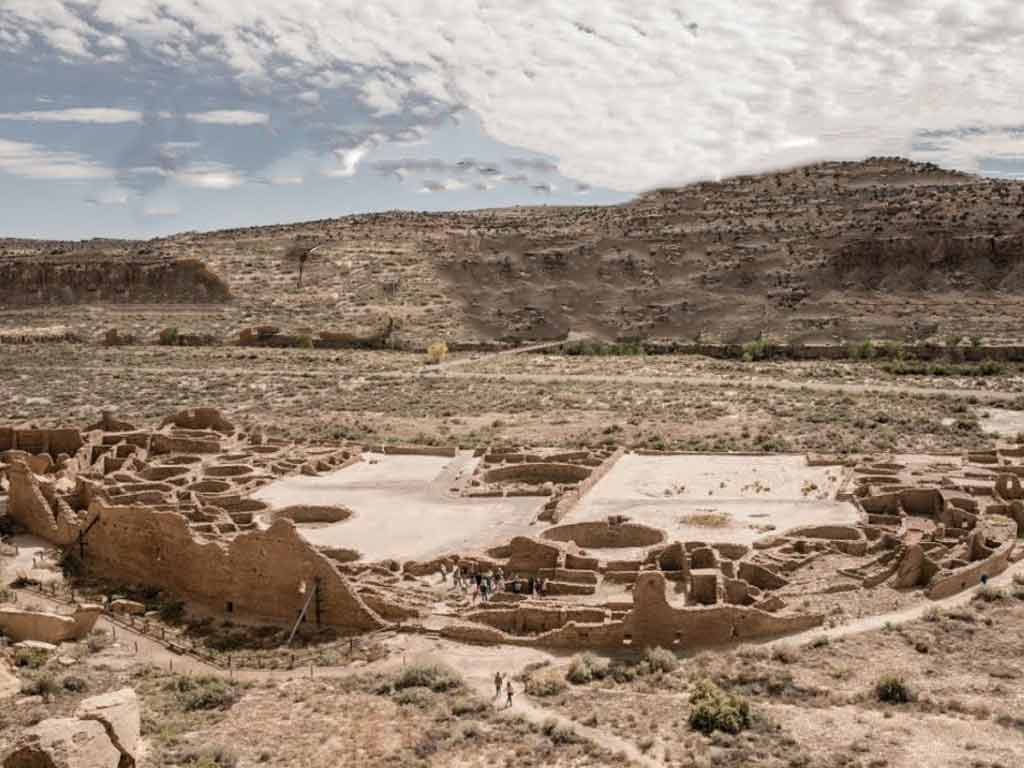
The story of Mesa Verde begins with the Ancestral Puebloans, who, over centuries, cultivated an intricate relationship with the land.
Early settlements in the region laid the foundation for the cliffside dwellings that would later become marvels of architectural achievement.
Architectural Marvels of Mesa Verde
The dwellings at Mesa Verde showcase the remarkable architectural skills of the Ancestral Puebloans.
Multi-story structures nestled into the cliffs, ingeniously constructed with sandstone bricks and wooden beams, speak to the resourcefulness and adaptability of this ancient civilization.
Flourishing Cultural and Social Dynamics
Mesa Verde was not merely a cluster of buildings; it was a thriving community with rich cultural traditions.
The Ancestral Puebloans engaged in daily activities, social ceremonies, and artistic expressions that reflected the vitality of their civilization.
Environmental Challenges and Agricultural Practices
The challenging environment of the southwestern United States posed both opportunities and obstacles for the Mesa Verde inhabitants.
The Ancestral Puebloans developed sophisticated agricultural practices, adapting to the arid landscape while facing the unpredictable nature of climatic shifts.
The Mystery of Abandonment
Around 1300 CE, Mesa Verde experienced a mysterious exodus. Various theories, from environmental pressures to social upheaval, attempt to explain the sudden departure of the Ancestral Puebloans.
Archaeological evidence unveils clues, yet the full story remains an enigma, shrouded over time.
Contemporary Significance and Preservation Efforts
In the modern era, Mesa Verde holds both historical significance and environmental fragility.
Efforts to preserve this archaeological treasure involve a delicate balance between exploration and conservation.
The site serves as a living classroom, educating present and future generations about the complexities of human existence in ancient times.
When Was Mesa Verde Rediscovered?
The discovery and subsequent rediscovery of Mesa Verde, with its remarkable cliff dwellings, form a crucial chapter in the annals of American archaeology.
This archaeological treasure, hidden amidst the canyons of southwestern Colorado, was initially inhabited and abandoned by the Ancestral Puebloans.
However, its existence faded into obscurity for centuries until its rediscovery in the late 19th century.
The tale of Mesa Verde’s rediscovery intertwines with the pioneering spirit of exploration and the relentless pursuit of unraveling the mysteries of ancient civilizations.
Native Knowledge and Initial Recognition
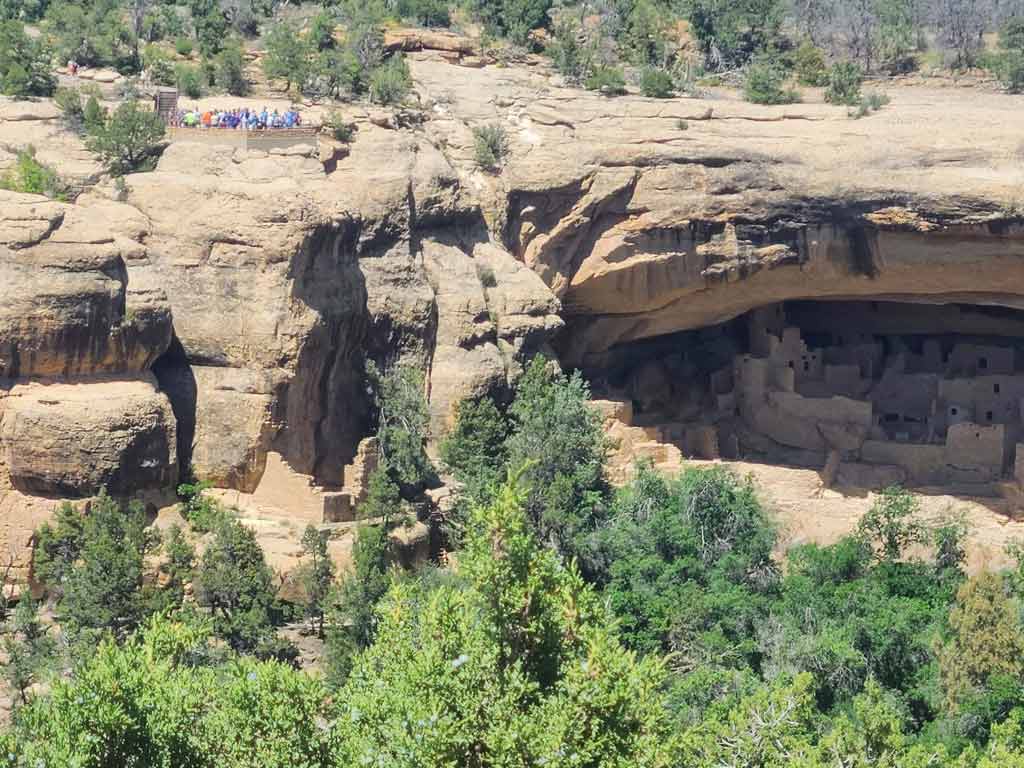
Long before the arrival of European settlers, Native American communities in the region were aware of Mesa Verde and its cliff dwellings.
The Ute and Navajo tribes, among others, held ancestral knowledge of these structures, contributing to the broader cultural tapestry of the area.
Gustaf Nordenskiöld’s Expedition (1891-1893)
The formal rediscovery of Mesa Verde is credited to the Swedish explorer Gustaf Nordenskiöld.
In the early 1890s, he led an archaeological expedition that uncovered and documented the cliff dwellings, bringing international attention to this archaeological marvel.
Richard Wetherill’s Contribution
Richard Wetherill, a rancher and amateur archaeologist, played a pivotal role in Mesa Verde’s rediscovery.
In 1888, Wetherill, along with his brother-in-law Charles Mason, stumbled upon the cliff dwellings.
Their subsequent explorations and interactions with Nordenskiöld contributed significantly to the understanding and documentation of Mesa Verde.
Impact on American Archaeology
The rediscovery of Mesa Verde had profound implications for American archaeology. The well-preserved cliff dwellings provided a unique window into the lives of the Ancestral Puebloans, reshaping scholarly perspectives on pre-Columbian cultures in the American Southwest.
Mesa Verde National Park Establishment (1906)

Recognizing the cultural and historical significance of Mesa Verde, President Theodore Roosevelt designated the area as Mesa Verde National Park in 1906.
This move marked the formal protection and preservation of the cliff dwellings and the surrounding archaeological sites.
Continued Exploration and Research
Since its rediscovery, ongoing exploration and research efforts at Mesa Verde have deepened our understanding of the Ancestral Puebloans and their complex relationship with the environment.
Archaeologists continue to uncover new insights, adding layers to the story of this ancient site.
Which Civilization Lived in Elaborate Cliff Dwellings?
Nestled within the rugged landscapes of the American Southwest, a fascinating chapter in pre-Columbian history unfolds through the intricate cliff dwellings built into the canyons.
These architectural marvels stand as silent witnesses to the lives of a remarkable civilization that once thrived in harmony with the land.
Let’s delve into the Mesa Verde civilization that left behind these awe-inspiring structures, offering a glimpse into their unique way of life:
Ancestral Puebloans
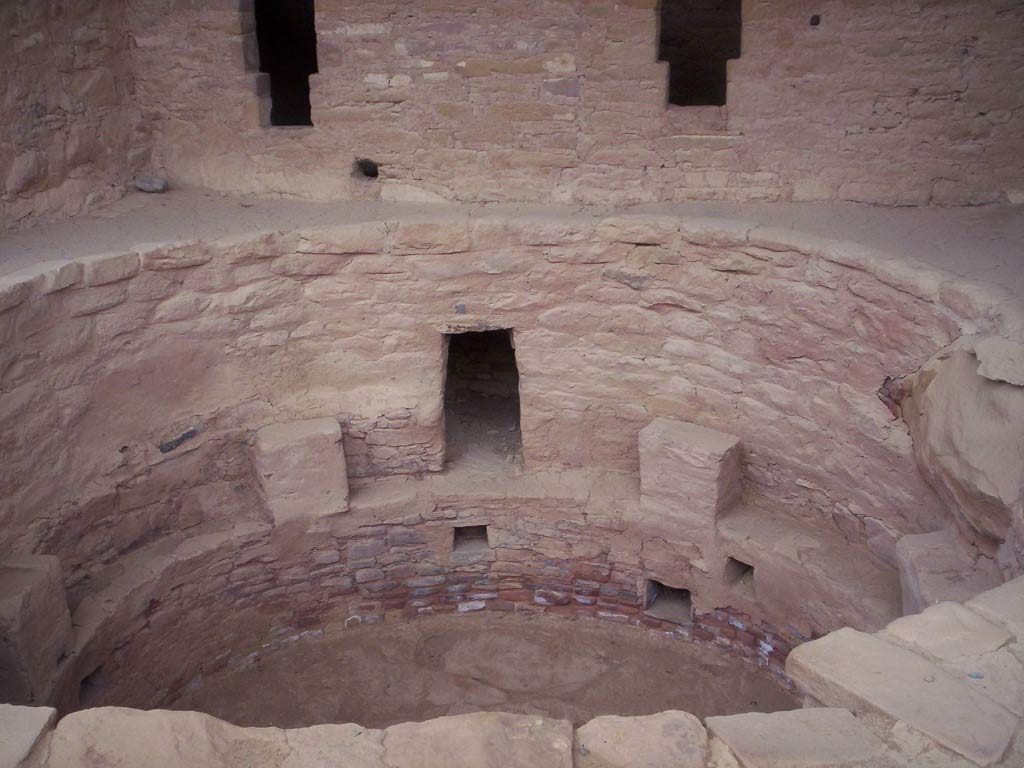
The Ancestral Puebloans, also known as Anasazi, were a group of Native American people who inhabited the Four Corners region of the United States—encompassing parts of present-day Arizona, Colorado, New Mexico, and Utah.
Renowned for their distinctive architectural achievements, they are the creators of elaborate cliff dwellings that continue to captivate archaeologists and visitors alike.
The ingenuity displayed in their construction methods and the integration of dwellings with the natural landscape speaks volumes about their deep connection to the environment.
Mesa Verde
Mesa Verde, a UNESCO World Heritage Site, serves as a prominent center of the Ancestral Puebloan civilization.
The cliff dwellings and mesa-top villages, such as Cliff Palace and Balcony House, were integral to the daily life and ceremonial activities of these ancient people.
The meticulous construction of multi-story buildings into the cliffs reflects advanced architectural knowledge and communal living practices.
Chaco Canyon
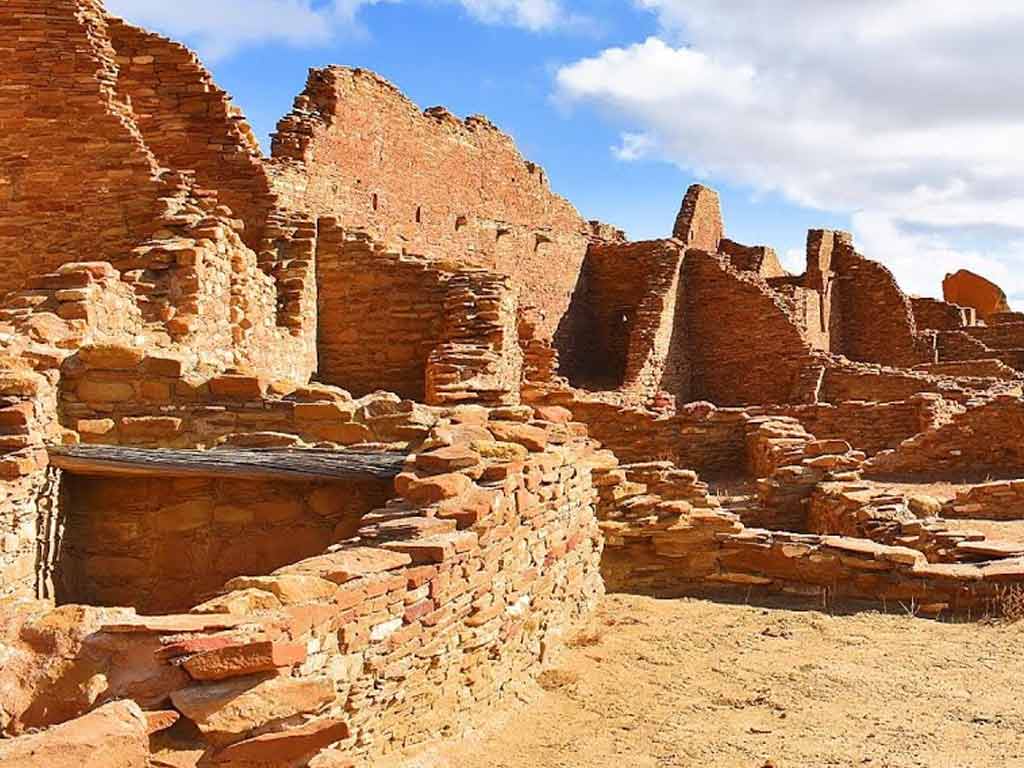
Chaco Canyon, located in the high desert of New Mexico, stands as the pinnacle of Ancestral Puebloan architectural and engineering achievements.
Pueblo Bonito, a massive complex with over 600 rooms, showcases the ceremonial and societal importance of this site.
The precise alignment of structures with celestial events suggests a sophisticated understanding of astronomy.
Canyon de Chelly
Canyon de Chelly in Arizona provides a canvas where the Ancestral Puebloans painted their unique way of life.
The cliff dwellings, including the renowned White House Ruin, are nestled amidst stunning natural beauty.
The canyon served not only as a place of habitation but also as a spiritual landscape, with petroglyphs and pictographs preserving their cultural expressions.
Bandelier National Monument
Bandelier National Monument in New Mexico unveils the remnants of Ancestral Puebloan dwellings amid the scenic Frijoles Canyon.
The cliffside structures, carved into soft volcanic tuff, offer glimpses into the social fabric, daily routines, and artistic expressions of this vibrant civilization.
Legacy and Cultural Significance
Reflecting on the enduring legacy of the Ancestral Puebloans, their elaborate cliff dwellings symbolize more than architectural prowess.
From communal living in challenging environments to intricate ceremonial practices and artistic endeavors, their way of life continues to inspire curiosity and admiration.
The preservation of these sites allows contemporary generations to connect with the cultural richness and resilience of the Ancestral Puebloans.
FAQs
For How Many Years the Abandonment of Mesa Verde Took Place?
The abandonment of Mesa Verde took place over several decades, spanning from around 1275 to 1300 CE.
What role did environmental factors play in the abandonment of Mesa Verde?
Severe and prolonged droughts in the region significantly impacted the agricultural practices of the Ancestral Puebloans at Mesa Verde.
Crop failures, famine, and resource depletion due to arid conditions played a pivotal role in the community’s decision to abandon their cliff dwellings.
Were there cultural beliefs influencing the abandonment of Mesa Verde?
Yes, many Pueblo cosmologies held a belief that the Ancestral Puebloans’ true home was in the south, and they were destined to return to that sacred place.
This cultural belief may have influenced the decision to leave Mesa Verde and embark on a journey to their perceived ancestral homeland.
To Recap
The abandonment of Mesa Verde around 1300 CE stands as a poignant testament to the intricate dance between human civilization and environmental forces.
A convergence of factors—severe droughts, resource scarcity, social strife, and cultural beliefs—shaped the destiny of the Ancestral Puebloans.
The echoes of their departure resonate through the well-preserved cliff dwellings, urging contemplation on the fragility of human societies.
Mesa Verde’s enigma serves as a timeless reminder, inviting reflection on the resilience of ancient cultures and the enduring mysteries that lie within the arid canyons.
In its abandoned silence, Mesa Verde beckons us to unravel the threads of history and appreciate the delicate balance between humanity and nature.

Leave a Reply